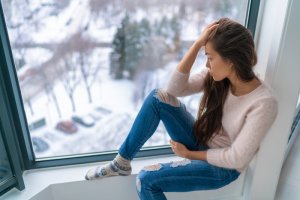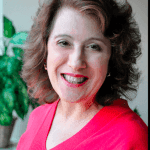‘SAD’ Intersects with Substances and COVID
It’s that time again. The days are short. There’s a chill in the air. Taking that long walk or going for a jog seems unappealing. Instead, hunkering down indoors and feeling blah may transpire. But what if feeling so very blah interferes with life? This may be a case of SAD, short for seasonal affective disorder.
What is SAD?
Seasonal Affective Disorder (SAD) is a type of depression that’s related to changes in seasons. SAD will usually occur at about the same time every year, usually in late autumn or at the onset of winter. Symptoms of SAD can include depression, fatigue, and hopelessness. It’s generally advised to take the symptoms of SAD seriously.
Another reason to swing into action? SAD and substance abuse may go hand in hand. SAD for some is a pathway to substance abuse. American Addiction Centers points out that a segment of people with serious winter doldrums take solace in substances. “A lack of energy may cause some to turn to stimulants. Others may seek to numb the pain of depression with drugs like opioids or alcohol.”
Dualdiagnosis.org weighs in on this situation. “Unfortunately, many people struggling with depression due to seasonal affective disorder do not seek help. Rather, they attempt to self-medicate the issue with drinking and drug use.” This could have serious consequences. “The effect can be the development of a substance use disorder, including addiction, that does not go away with the season’s change.”
Others quantify this link. The Anxiety and Depression Association of America claims that 20% of those with SAD and other mood disorders struggle with substances too. The National Institute on Drug Abuse puts the number higher. It estimates that 50% of people who suffer from a mental health disorder also contend with a substance use disorder at some point during their life.
Adding Yet Layer to this Picture
As if things weren’t trying enough at this juncture, COVID compounds it. The personal health columnist at the New York Times refers to this combination as “The Double Whammy of Seasonal Affective Disorder in a Season of COVID.” She comments on her own waning “lack of enthusiasm” for activities, both outdoors and in, come the darker days. She also anticipates a heightened effect during this spiraling health crisis. “While the pandemic, with its myriad economic, vocational, educational and social disruptions, is challenge enough for people who are not normally prone to the blues, the days of truncated daylight this November through March could be far gloomier than usual for millions of Americans who suffer annually from seasonal depression.”
She adds, ”This winter the pandemic is expected to intensify the depression experienced by many people with the syndrome known as seasonal affective disorder, or SAD.” And in the process of discussing SAD, she offers data about the number of people afflicted with it. An estimated five percent of the population has “full-blown SAD syndrome,” according to Norman E. Rosenthal, M.D., the researcher who identified SAD in the 1980’s. However, three times as many have a milder version.
The point? Regardless of its intensity, SAD this year will be on the increase. So too will the number of people suffering from it who turn to substances to rev up their get-up-and-go and ease their melancholy. In all, this season is not just a double whammy, but a triple: SAD, substances and COVID.
Strategies for Managing
Treatment, treatment, treatment – that’s the best way to manage. American Addiction Centers encapsulates the way forward as “phototherapy, psychotherapy, and medication.” This era of COVID does not preclude using any and all of these.
Phototherapy refers to increasing exposure to a source of light. Natural light, or sunlight, is ideal and easy. Getting sunlight is as simple as going outdoors when it’s sunny. When you’re inside, open blinds and window coverings to let the light in. Standing next to a window or moving a chair, desk or other furniture to a window location may help. The Mayo Clinic refers to the use of a light therapy box for a short period daily. This device emits bright light similar to natural outdoor light.
Psychotherapy is the go-to gold standard. As such, American Addiction Centers advises to address SAD and substances together. This integrated approach proves most effective. Working on only one leaves the other unchecked; that, in turn may trigger a relapse in either. In this realm, cognitive behavioral therapy (CBT) is used as a core element. Also those in treatment may receive medication as part of the therapeutic process. In some cases, medical professionals may prescribe certain types of antidepressants.
What’s the key takeaway? Be aware and don’t let SAD, substances and COVID converge on your life.
